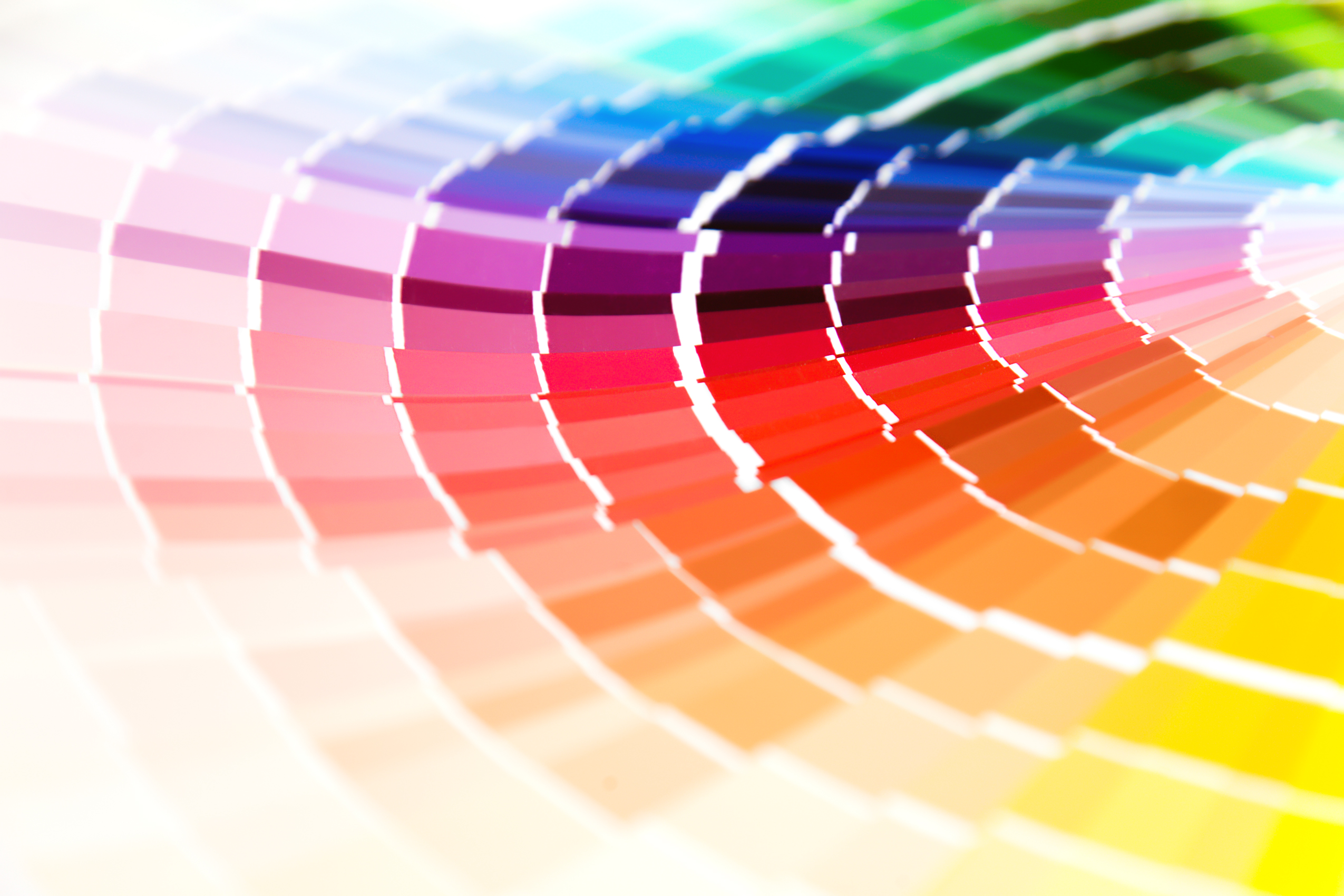 Most marketers would agree, color is a vital component of everything they do. Color can be used to represent essential attributes of your brand, express key messages or tap into emotional and psychological impulses, as this infographic by The Logo Company colorfully illustrates.
Most marketers would agree, color is a vital component of everything they do. Color can be used to represent essential attributes of your brand, express key messages or tap into emotional and psychological impulses, as this infographic by The Logo Company colorfully illustrates.
For this reason, marketers invest time and money in determining the most effective colors to represent their brand, product or campaign. Once you go through the process of choosing colors, it’s important to be sure they render as consistently as possible across digital and print media.
Here are some tips and considerations that can impact the consistency of color in your printed materials.
Color Standards – Weighing Consistency & Costs
Four-color printing, or the CMYK process, is a method of printing color by combining four colors—cyan, magenta, yellow and black—in a variety of ways to produce a multitude of other colors. A majority of the world’s printed material is produced using the CMYK or 4-color process.
The Pantone Matching System, known as PMS, is a proprietary color system. It requires highly precise mixes of ink to create an exact color, which can potentially make it a more expensive option for printing.
PMS colors can be reproduced using a mix of CMYK. But generally, for an exact PMS match, it may require additional colors in the print process, which might significantly increase cost compared with straight 4-color process printing.
Your Printer as Your Partner
It’s important to work with your print provider to establish your overall printing objectives, and how color can be impacted by the choices made. This will help determine the best printing process to meet your objectives.
A good place to start is to provide your printer with a sample of what you’ve printed in the past, if available. Your printer can evaluate how it was produced (e.g., digital or offset) and what kind of stock was used. From here, your printer can provide the best guidance for what you are looking to achieve with your project, including details about the advantages and disadvantages of digital and offset printing methods, and how to get the best color quality and consistency from each.
Digital vs. Offset Commercial Printing
There are some factors that affect offset color that you should consider. First, with offset printing, you’re dealing with ink and water, so you have to get that balance right. In addition, different press manufacturers have slightly different presses, which can impact color consistency.
Commercial printers also use different brands of ink, and they will often mix PMS colors rather than purchasing them pre-mixed. Mixing ink is not a perfect science, so it can result in some variation in color. There can be more volatility matching color from run to run, especially if you move from one printing company to another.
Another consideration with offset printing is that it typically cannot accommodate short-run print jobs or jobs that require variable content throughout the print run (also referred to as versioning). Digital printing, on the other hand, offers the ability to print short runs, on-demand jobs, and variable content, efficiently and cost effectively, while providing consistent color.
When it comes to consistency, most digital print providers can achieve the same color quality from the same file, compared with the variations that can occur from one offset printer to the next. With digital, there is also less time spent on “getting it perfect.” Because offset printing is generally more expensive, marketers might spend more time ensuring the color is perfect. With digital, marketers are often willing to accept a certain degree of flexibility with color options in order to enjoy the flexibility of short runs, custom versioning and on-demand options.
Because of the significant set-up costs involved with offset printing, digital tends to be the most cost effective especially for lower quantities. As quantities increase, the per piece cost can become cheaper with offset as the set-up costs are distributed across the large quantity.
Letterhead, stationery, and envelopes require some special consideration. This is because some inks cannot go through a copier again in the future – copiers will melt the toner, which could destroy the drum of the copier. For this reason, marketers should seek printers with specialized digital equipment or offset printers when sourcing these applications.
Final Thoughts
- Never go by RGB/monitor colors. We’ve all experienced the variations in color that occur comparing on-screen color to printer output.
- Ask for a proof. For digital, it’s possible to get a printed proof or sample for approval. Once you’ve experienced several jobs with your printer and have confidence in the consistency they can produce, a PDF proof should be sufficient. Getting a “printed” proof for an offset print job is not as feasible, since you have to set up the press and mix the inks. At that point, you might as well just run the job. However, there are several “color match” offline proofs that are accurate for offset jobs. Consult your print provider to see what they offer.
- Understand that certain PMS colors are hard to reproduce in CMYK. Reflex blue, for example, is one such color. It’s important that your print provider has color enhancement capabilities in order to address this particular color issue.
- Determine the level of variation you are comfortable with. If you’re doing smaller quantities on demand, digital may be the better choice, whereas it may make more sense to go with offset for large-quantity, static projects.
- Materials matter. Colors will look different printed on different types of stock or substrates. In addition, adding finishes such as UV coating can impact color. So be sure to ask your print provider how your choice of materials and finishes may affect your color.
The key to getting the color consistency that addresses your marketing objectives – from quality, cost and speed, to customized versioning and on-demand capabilities – is to work closely with your print provider to determine together the best print process for your needs.
Tags: Variable Data Printing, print, print best practices, compliant marketing materials, Color Printed Marketing Materials





